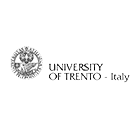MONAMI 2012 Tutorials
- A tutorial on Operating Heterogeneous Wireless Networks with SON (Self-Organizing Networks)
- A special tutorial on Semantic Middleware for Orchestrating Behavior
Sunday, 23 September, 14:00 – 18:00
Operating Heterogeneous Wireless Networks with SON (Self-Organizing Networks) [PDF]
by Dr. Henning Sanneck and Andreas Lobinger, Nokia Siemens Networks, Germany
Due to the decreasing revenue per user, mobile network operators are keen to reduce operational expenses in network deployment and operation. However, at the same time the dramatic increase of traffic in their networks requires new radio access technologies (RAT) like LTE to be deployed, in addition to existing 2G and 3G networks. To extend capacity as well as coverage (incl. indoor), traditional macro networks are complemented by smaller cell layers (micro, pico) down to femto cells, where basestations are even deployed to user's premises. LTE relays as a new type of network elements complement this infrastructure enabling more flexibility in providing the required backhaul.
All these measures result in on one hand efficiently addressing the bandwidth challenge, while on the other hand increasing network complexity counter-acting the initial desire to cut costs. Complexity comes simply from the increased number of network elements, but also from the requirement to combine different networks (2G/3G/LTE, femto), including legacy ones.
Self-Organizing Networks (SON) concepts have been proposed already for 3G and LTE macro networks to facilitate deployment (self-configuration), optimization and troubleshooting (self-healing). To cope with the effects of the "Heterogeneous networks" (HetNet) scenario described above, SON mechanisms are required to automate the network operation, thereby improving the operator's cost position.
After introducing some basics on HetNet and SON respectively, the tutorial describes SON functions for network implementation and ongoing automatic configuration. While often SON is limited to optimization concepts, the tutorial specifically also addresses operational concepts like SON-supported troubleshooting and coordinating different SON function instances in a system.
Across those topics, the specific challenges of multi-vendor HetNets, and how those challenges are addressed by 3GPP standardization, are explained.
Objectives
- Providing a comprehensive introduction to Self-Organizing Networks (SON) applied to 3GPP mobile radio networks
- Addressing both network optimization and operation (configuration, troubleshooting, coordination) processes and how they can be improved with SON functions
- Giving the latest state-of-the-art in applying SON concepts to “Heterogeneous Networks” (multi-RAT, multi-cell layer, multi-vendor) contributing to address the “traffic explosion” challenge in mobile networks
Intended Audience
- Researchers in mobile network management automation, Future Internet management, autonomic networking, cognitive radio / cognitive networks
- Engineers working in network operation and optimization at operators and network equipment manufacturers
- PhD and master students in the area of communication networks
Tutorial Outline
1. LTE / HetNet / Network Management Basics
2. Introduction to Self-Organising Networks
3. Self-Configuration
- Auto-connectivity and –commissioning (incl. multi-vendor and LTE-A relay, with demo)
- Dynamic Radio Configuration: (Multi-vendor) Physical Cell ID (PCI) and Automatic Neighbour Relationship (ANR) setup
4. Self-Optimization
- Mobility Robustness Optimization
5. Self-Healing
- Cell Degradation Detection and Diagnosis (incl. demo)
6. SON Coordination
7. Integrated SON demo
- LTE radio network simulation, centralized self-optimization, SON coordination
Prerequisite Knowledge
Basic knowledge on mobile networks, in particular 3GPP, and network management concepts.
Speaker Biographies
Dr. Henning Sanneck studied Electrical Engineering at the University of Erlangen- Nuremberg, Germany. After receiving his Diploma in 1995, he joined GMD Fokus (now part of Fraunhofer) in Berlin. At Fokus, he worked as a Researcher in the area of Quality-of-Service (QoS) support for Real-Time Services in IP-based networks. He received his Dr.-Ing. (PhD) degree in Electrical Engineering from the Technical University of Berlin with a thesis on Voice over IP QoS in 2000.
In 2001 he joined Siemens - Mobile Networks in Munich, working as a Senior Research Engineer on cross-layer design for IP-based Radio Access Networks (RANs), Software Technologies for Mobile Networks and Technology Management. He became a Project Manager for technology innovation projects in the area of Network Management for 3G and beyond RANs in 2003, working on Basestation Auto-Configuration and Real-Time Performance Management concepts and their realisation as product features. Since the formation of Nokia Siemens Networks in 2007 he is a Research Manager heading the "Network Management Automation" team.
Dr. Sanneck has published 40 papers in refereed conferences and journals and has more than 15 patents granted or pending. He has co-edited and –authored the book “LTE Self- Organising Networks” published by Wiley in 2011.
Andreas Lobinger received his Dipl.-Ing. degree in Electrical Engineering from the Technische Universität München in 1998, with specialization in Communications Engineering and Information Technology. He started as research engineer for Siemens Mobile Phones in 1998, working on definition and performance evaluation of the UMTS radio interface in 3GPP standardization. The same work continued on the LTE radio interface including higher layers and the extension to system level simulations. Since 2007 Andreas worked on algorithm design and system evaluations for different SON topics and use cases, optimizing the radio access layer. He participated in the EU FP7 project SOCRATES, on the topics of load-balancing and handover optimization.
The current work focus is on multi-RAT, multi-Layer, Heterogenous Networks. He will participate in the forthcoming FP7 call 8 project SEMAFOUR on advanced SON concepts.
Andreas has contributed to the books “LTE Self-Organising Networks (SON)” and “Self-Organizing Networks: Self-Planning, Self-Optimization and Self-Healing for GSM, UMTS and LTE” both published by Wiley in 2011.
Monday, 24 September, 9:00 – 12:00
Semantic Middleware for Orchestrating Behavior
Instructor: John Strassner - Huawei Technologies
The business, technical, and even societal aspects of systems have increased dramatically in complexity, requiring new technologies, paradigms and functionality to be introduced to cope with these challenges. These result in heterogeneous architectures that use different data formats and protocols for communicating and updating diverse data that describe the same information objects. This gives rise to different problems, ranging from how to best incorporate and utilize an Internet of Things, as well as Smart Objects and Smart Spaces, to how to correlate different types of data with each other to determine context, detect context changes, provide more granular analytics on a given subject, and to ensure that the same service is provided by devices that have different programming languages.
This tutorial provides an in-depth review of the current state-of-the-art, focusing on mobile network and service management, and then reviews the state of the art in information and data modeling, ontologies, and why the ultimate answer lies in seamless integration of models and ontologies into management systems. This integration can be used to provide functionality ranging from targeted features that augment existing capabilities, or can be used as a new design paradigm to realize a system providing autonomic behavior (the most important of which is self-governance). Accordingly, the third phase of this tutorial provides a combination of theory and practice that emphasizes the use of open source software that will explain how to create different elements of this range of solutions. Example solutions created in this tutorial include: (1) the use of information modeling (in particular, DEN-ng) to harmonize and translate between the different languages and management methods used by different devices; (2) the use of ontologies to augment the facts defined by models with formal definitions that enable machine-based learning and reasoning to be used; (3) the use of software patterns that show how support for different management features can be implemented in an extensible manner; (4) enhancements and alternatives to the standard “model-analyze-plan-execute” control loop used to orchestrate behavior; (5) the use of a novel context-aware policy management approach to enable the services and resources of a network to change in order to meet the demands of changes in current environments, user needs and environmental conditions; (6) how to represent different semantics associated with network configuration and service demands. The theoretical lessons in this tutorial will be reinforced with use cases and practical examples.
Objectives
The objectives of this special tutorial are:
- to introduce the attendee to the importance of data, and how to translate data into information, then to knowledge, and then to wisdom,
- to provide the attendee practical information to aid their research and/or work in implementing the theories set forth in this tutorial
- to increase awareness of the importance of information at a broader community level.






































